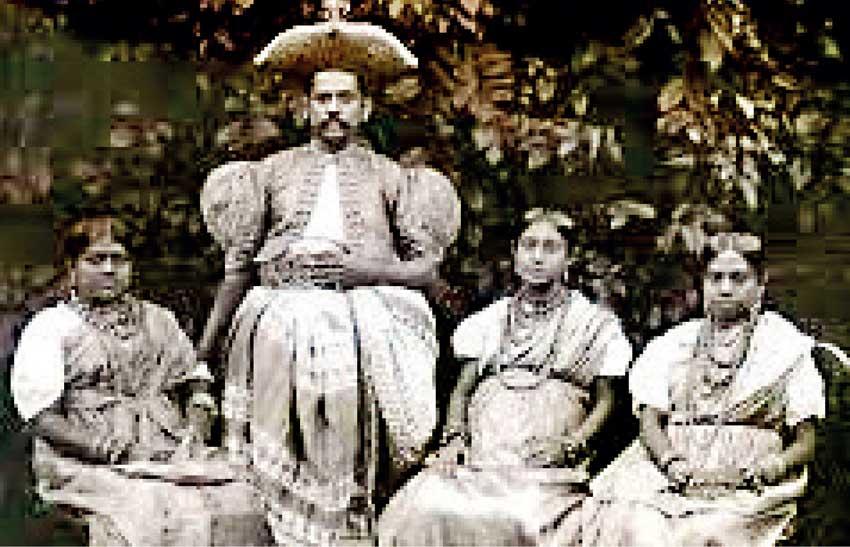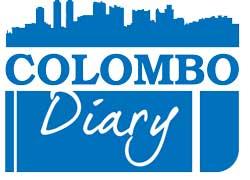Reply To:
Name - Reply Comment

A family of Govigama caste
 “What’s in a name? That which we call a rose, by any other name, would smell as sweet,” said Shakespeare in Romeo and Juliet. True as this may be in many cases, there are situations in which the name means a lot. It may have a desirable or an undesirable connotation and a change of name may make a world of difference.
“What’s in a name? That which we call a rose, by any other name, would smell as sweet,” said Shakespeare in Romeo and Juliet. True as this may be in many cases, there are situations in which the name means a lot. It may have a desirable or an undesirable connotation and a change of name may make a world of difference.
In countries like Sri Lanka and in the Indian sub-continent, caste names say a lot about the status, background or origin of a person and fixes his or her place in a hierarchical social order. In Sri Lanka, caste is a social marker or factor in arranged marriages; the organisation of the Buddhist clergy into Nikayas, in political mobilisation, and in the composition of the power elite.
In countries like Sri Lanka and in the Indian sub-continent, caste names say a lot about the status, background or origin of a person and fixes his or her place in a hierarchical social order
However, caste has been undergoing rapid changes among the Sinhala-Buddhists over time in response to changes in the social, economic and political environments. But these changes have come about seamlessly without having to organise and agitate. In Sri Lanka caste has not been rejected, but its members have devised ways to get around its restrictions. This, and many other aspects of the Sinhalese caste system, are brought out by M.W. Amarasiri de Silva of the University of Pittsburgh in his 2018 paper on changing names in the journal Cultural Dynamics brought about by Sage.
In Sri Lanka, caste mobility was facilitated by changes brought about by the British Administration and pre-and post-independence economic developments. The emergence of urban conglomerations, rural to urban migration due to a decline in agriculture, the commercialisation of agriculture, the dismantling of the feudal ‘Rajakariya’ system, and the religiopolitical nationalist movement, all contributed to the dilution of the rigidities of caste.
The British practice of not making caste a criterion for employment and the propaganda of Christian missionaries and leftist politicians paved the way for the dilution of casteism. The development of a Sinhala nationalist culture and its wide adoption due to State patronage tended to blur caste distinctions. The adoption of the Kandyan Sari, the Kandyan wedding attire, and the Kandyan dance by Sinhalese irrespective of caste and region, has helped weaken caste and regional distinctions.
Most of the adoption of “acaste” names was done by low-castes. Family name changes were most numerous among members of non-Govigama castes
Names as a marker
In rural Sri Lanka, “low castes” are identified by derogatory village and family names. They are socially marginalised and stigmatised. This makes it difficult for low-castes to move up the class ladder and socialise with the wider society as they would like to. De Silva says that this forces low caste youth to move to the urban areas, find non-caste employment, and change their names into “non-caste” or “acaste” names.
Non-caste or “acaste” names allow low caste rural youth to choose their employment, residence, marriage partners and social activities to become part of emerging Sri Lanka. Urban life enables migrant youth to evaluate themselves, not by traditional rural caste criteria, but by the nature of employment, wealth, English language ability, Western manners, and dress. Those adopting the new markers are able to marry across caste and dilute their caste identity. Changes in names could be part of the make-over and the name change could occur either before or after making cultural changes.
Traditionally, caste was linked to occupation and names were a marker of caste. There were high caste and low caste names. A high-caste Govigama was given a ‘Vasagama’ name (name of village of residence) and an honorific (‘Patabendi’) name. However, some Govigama had no such titles. They were identified by a ‘Ge’ name or “house or family name,” such as Ihala Gedera (“house located at the upper elevation”) or Pahala Gedera (“house located at the lower elevation”). Others were identified by their father’s name, for example, Ukkuwage Puncha (“Puncha, the son of Ukkuwa”).
However, caste has been undergoing rapid changes among the Sinhala-Buddhists over time in response to changes in the social, economic and political environments
Caste names were imposed by the Registrars of Birth, who mainly came from the upper castes. Low castes could not register names of their choice, de Silva says. But things changed when legal procedures to change names were introduced. Low-castes were able to adopt names that were either higher caste names or names which did not denote any caste status.
According to anthropologist Gananath Obeyesekere, in the colonial era, this resulted in a “mass usurpation” of high-caste names by low castes. Govigamas and Karavas without ‘Patabendi’ names also went in for ‘Patabendi’ names in a massive way. High castes with old-fashioned rural names used the new facilities to take modern names “to obtain prestigious jobs and marry into urban, upper-class families,” as de Silva put it.
Some low caste but powerful men, who sought greater social prestige, practised hypergamy (or marriage into a higher caste), took upper-caste names. Anthropologist Nur Yalman described how an ordinary Goigama man named Dehi Gaha Pitiya Kalu Banda of Terutenna without a ‘Patabendi’ name married into an aristocratic family and adopted the aristocratic title (‘Radala’) of his wife, Nissanka Mudiyanselage Tun
Amunu Gedera.
Obeyesekere points out how in Hinidumpattuwa, the rich and powerful but low caste people formed a new social group called ‘Pelantiya’ with other powerful and rich families of the same caste. The ‘Pelantiya’groups assumed honorifics and patronymics resembling ‘Patabendi’names.
Changes in Environment
Changes in the environment played a big role in changing caste names, de Silva points out. In the early 20th. Century, thanks to the Sinhala-Buddhist revivalist movement initiated by Anagarika Dharmapala, the Sinhalese began to shed a colonial-era propensity to take Western names. Dharmapala himself had shed his given name - Don David Hewavitharana. Many non-Govigama Sinhalese-Buddhists on the Western coast, who had Portuguese names since the 16th.Century, began giving their children Sinhala and Sanskrit names.
De Silva reports that in 1976, before economic liberalisation, only 484 people announced name changes in newspapers. During 1993-1995, this number increased to around 4,000 per year. From 1995 to 2012, the average number of notifications published per year had increased to 5,800.
‘Acaste’ names
Between 1993 and 2012, out of 40,747 notifications in the papers on name change, “acaste” names or “caste-neutral” names had increased from 21% in 1993–1995 to 35% in 2000–2012. Urbanised districts like Colombo, Kurunegala, Gampaha, Kandy and Ratnapura accounted for the largest proportions of applications for name change. The figures were: Colombo 13.3%; Kurunegala 12.2%; Gampaha 12.1%; Kandy 8.7%; and
Ratnapura 8.4%.
The name changers were predominantly male (75%). However, the percentage of females had increased from 22.5% in 1976 to 33.3% in 1995 and then to 35% in 2012, indicating that females were also increasingly becoming socially mobile and “individualized”, having been freed from caste restrictions.
Most of the adoption of “acaste” names was done by low-castes. Family name changes were most numerous among members of non-Govigama castes. Of the total number of people who changed their names, 64% were from non-Govigama castes such as Bathgama, Naketi, Hena, Dura, and Vahumpura castes. The caste backgrounds of those who sought to change their names were: Bathgama (20.3%); Naketi (17.3%); Hena, (13.5%); Dura (12.1%); Vahumpura (9.7%); Achari (6.1%); Karava (3.8%); Salagama (1.8%); and Kumbal (1.8%).
But Govigamas also assumed ‘acaste’ names. For example, G.M. Juvanis Appuhami, a Govigama from Colombo, changed his name to Charles Weeragunatilleke. Juvanis and Appuhami were considered old-fashioned names of villagers. The new name did not connote any caste association and resembled an ‘acaste’ names of the Lankan elite. Galman Pedige Yasaratne changed his name to Sanjeeva Kumara, a name that does not connote any caste allegiance. “The case of Sanjeeva shows that by changing freely his name, he has overcome many barriers in his life and was better able to assimilate into the urban culture and society in Colombo,” de Silva comments.
Upasaka Panikkiyalage Somasiri changed his name to Udadeniye Pathiranage Somasiri to get rid of ‘Panikkiyalage’ which indicated that he was a person of the drummer caste. The name Rankiralaya Nandoris was changed to Ratnayakage Sunil Senanayake. Ratnayake is a well known Govigama name.